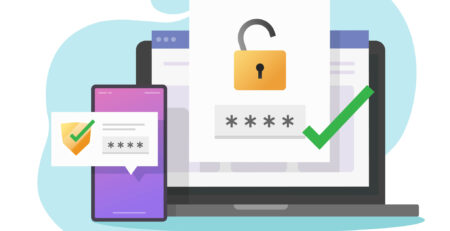Top Network Security Threats and How to Mitigate Them
In today’s digital age, network security is a critical concern for businesses of all sizes. Small businesses, in particular, are often targeted by cybercriminals due to their perceived lack of robust security measures. As an IT-managed service provider in Southern California, it’s essential to educate your clients about the top network security threats and how to mitigate them effectively. This article will delve into the most common threats and provide actionable steps to enhance network security.
1. Phishing Attacks
Threat: Phishing attacks involve cybercriminals sending deceptive emails or messages to trick individuals into revealing sensitive information, such as passwords or credit card numbers. These attacks often appear to come from legitimate sources, making them particularly dangerous.
Mitigation:
- Employee Training: Regularly train employees to recognize phishing attempts and report suspicious emails.
- Email Filtering: Implement advanced email filtering solutions to detect and block phishing emails.
- Multi-Factor Authentication (MFA): Use MFA to add an extra layer of security, making it harder for attackers to gain access even if credentials are compromised.
2. Ransomware
Threat: Ransomware is a type of malware that encrypts a victim’s data, rendering it inaccessible until a ransom is paid. This can lead to significant financial losses and operational disruptions.
Mitigation:
- Regular Backups: Ensure regular backups of critical data and store them offline or in a secure cloud environment.
- Endpoint Protection: Deploy robust endpoint protection solutions to detect and block ransomware before it can cause harm.
- Patch Management: Keep all software and systems up to date with the latest security patches to close vulnerabilities.
3. Insider Threats
Threat: Insider threats involve employees or contractors who intentionally or unintentionally compromise network security. These threats can be challenging to detect and prevent.
Mitigation:
- Access Controls: Implement strict access controls to limit employees’ access to only the data and systems necessary for their roles.
- Monitoring and Auditing: Regularly monitor and audit user activities to detect unusual behavior.
- Security Awareness Training: Conduct ongoing security awareness training to educate employees about the risks and their role in maintaining security.
4. Distributed Denial of Service (DDoS) Attacks
Threat: DDoS attacks overwhelm a network or website with a flood of traffic, causing it to become slow or unavailable. These attacks can disrupt business operations and damage reputation.
Mitigation:
- DDoS Protection Services: Use DDoS protection services to detect and mitigate attacks in real-time.
- Network Redundancy: Implement network redundancy to ensure continued operation even during an attack.
- Traffic Monitoring: Continuously monitor network traffic for signs of a DDoS attack and respond promptly.
5. Unpatched Software
Threat: Unpatched software contains vulnerabilities that cybercriminals can exploit to gain unauthorized access to systems and data.
Mitigation:
- Automated Patch Management: Use automated patch management tools to ensure all software is up to date with the latest security patches.
- Vulnerability Scanning: Regularly scan systems for vulnerabilities and address them promptly.
- Vendor Communication: Stay informed about security updates from software vendors and apply patches as soon as they are released.
6. Weak Passwords
Threat: Weak passwords are easily guessable and can be cracked by attackers using various methods, such as brute force attacks.
Mitigation:
- Strong Password Policies: Enforce strong password policies requiring complex and unique passwords.
- Password Managers: Encourage the use of password managers to generate and store strong passwords securely.
- Regular Password Changes: Implement policies for regular password changes to reduce the risk of compromised credentials.
Conclusion
Network security is an ongoing process that requires vigilance and proactive measures. By understanding the top network security threats and implementing the recommended mitigation strategies, small businesses can significantly reduce their risk of cyberattacks. As an IT-managed service provider, your role in educating and supporting your clients is crucial in helping them maintain a secure and resilient network environment.











Leave a Reply